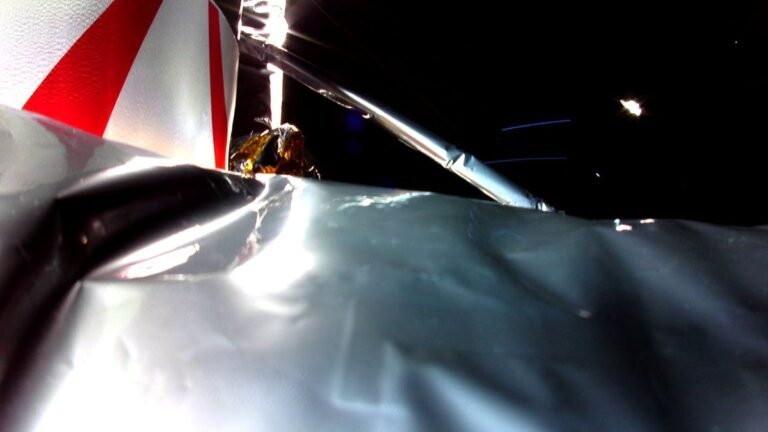
Astrobotic’s lunar lander will be reentering Earth’s atmosphere over a remote part of the South Pacific Ocean tomorrow afternoon, bringing to a close the failed moon landing mission.
Pittsburgh-based Astrobotic has been providing frequent updates on the Peregrine lunar lander since it launched on United Launch Alliance’s Vulcan Centaur on January 8.
The source of the anomaly was an ongoing propellant leak, which were preventing Peregrine from pointing its solar arrays at the sun.
But by the time it reenters the atmosphere tomorrow, Peregrine will have operated in space for over ten days.
Due to the propellant leak, Astrobotic said it had devised a two-step process to maneuver the spacecraft to the projected trajectory for reentry.

Astrobotic’s Peregrine lunar lander is still operating on orbit, with the company saying there is “growing optimism” that the spacecraft could survive in space longer than the current estimate.
The Pittsburgh-based startup has been releasing a series of updates to social media platform X since the spacecraft’s launch in the early hours of Monday morning.
Shortly after separating from the launch vehicle, United Launch Alliance’s Vulcan Centaur, engineers immediately started encountering issues.
But despite all odds, Peregrine has been operational in space for more than four days, and the estimated operational time remaining continues to extend.
The remaining 10 payloads on board are passive, and do not require power or communications from the spacecraft.

In a devastating series of updates earlier today, the Pittsburgh-based startup said a “failure within the propulsion system” is causing a critical loss of propellant.
The propulsion system is a critical component of a spacecraft, but it’s especially important for this mission, which is taking an indirect path to the moon.
NASA, likely sensing the difficulty of a moon landing, has issues awards to multiple companies under the program.
Other awardees include Intuitive Machines, which is set to make its own lunar landing attempt next month, and Firefly Aerospace, which will conduct its first lunar mission later this year.
A deputy administrator from NASA’s Science Mission Directorate, Joel Kearns, said in a statement after launch that “each success and setback are opportunities to learn and grow.






